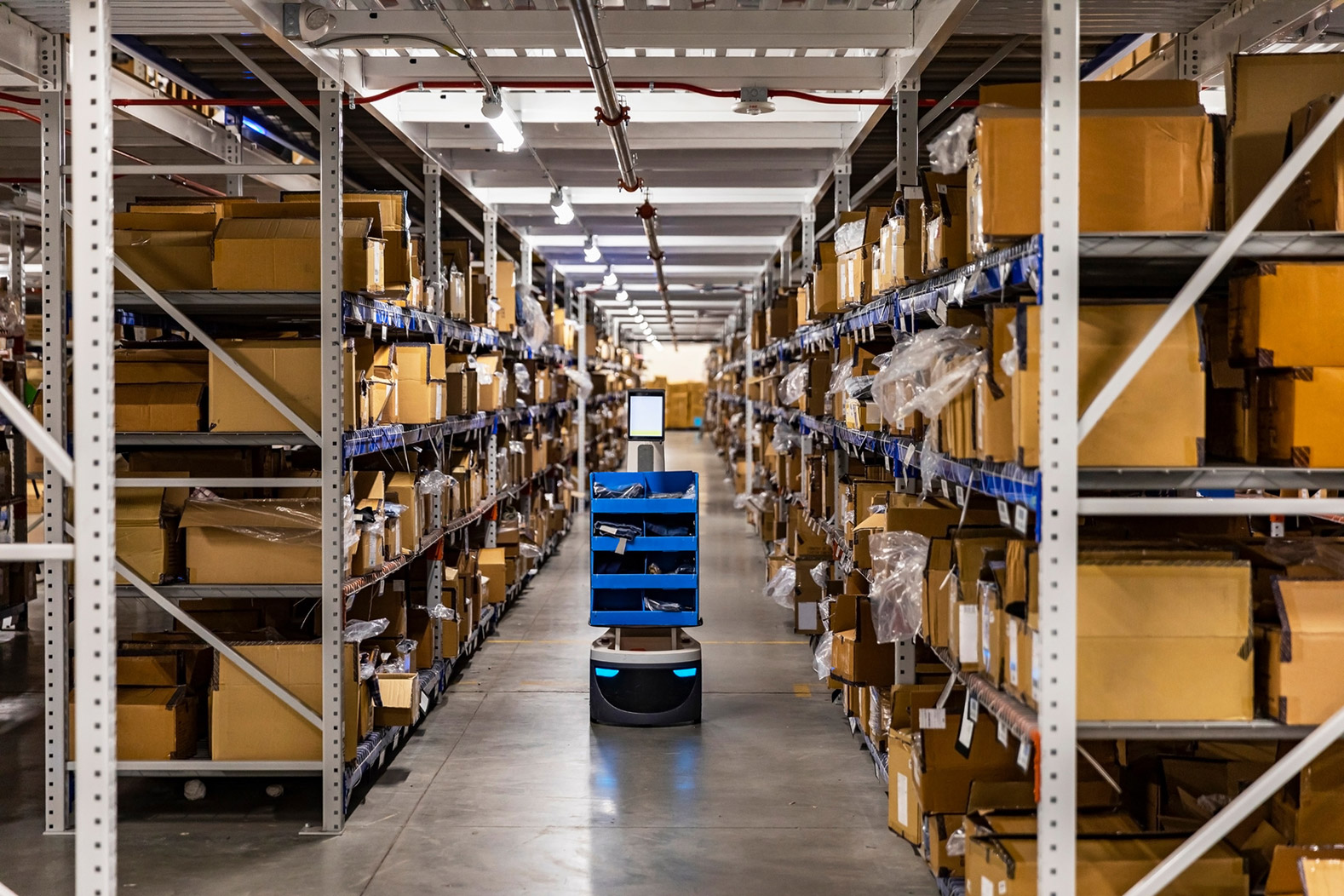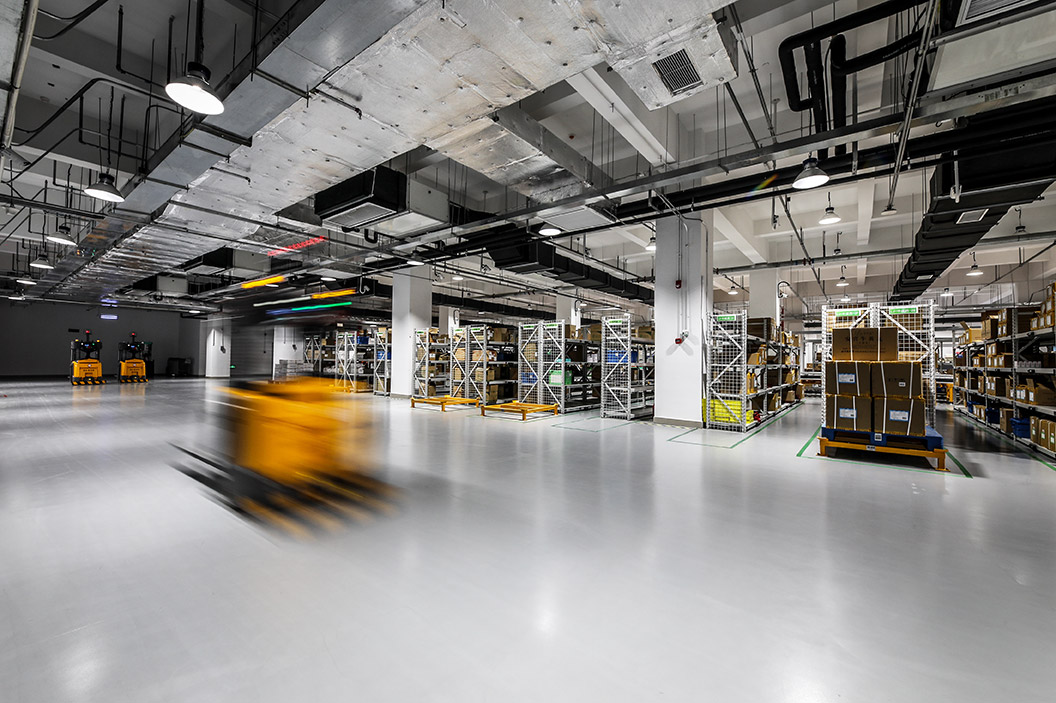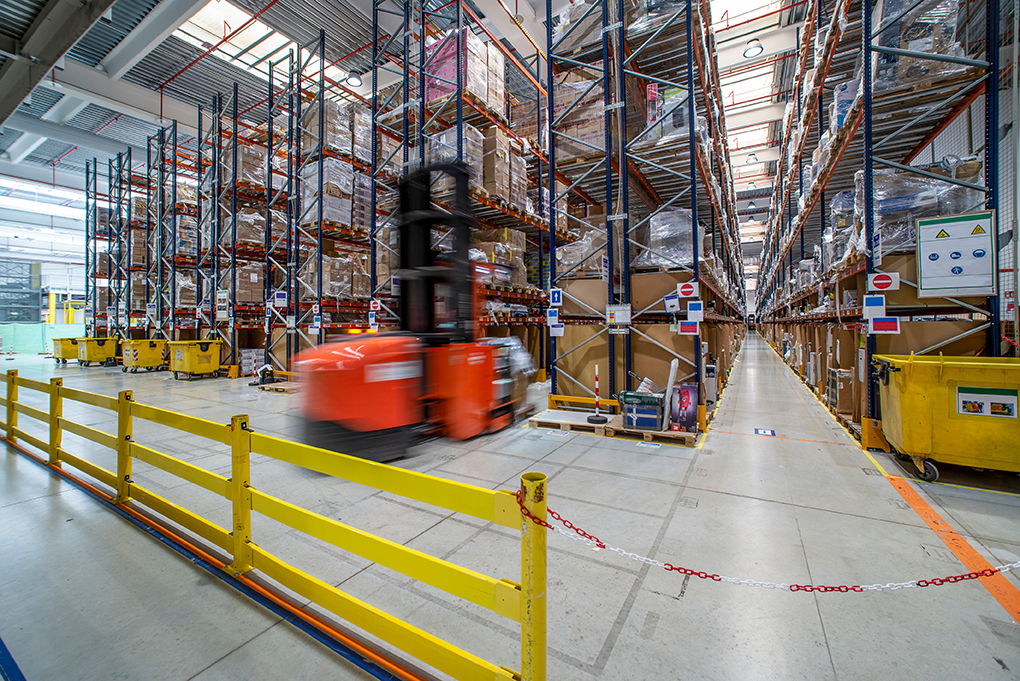Amazon FBA (Fulfillment by Amazon) has become a game-changer in the e-commerce world and has set a new standard for speed of delivery. Imagine tapping into Amazon’s vast and efficient fulfillment network, harnessing the power of its unbeatable brand recognition. For many businesses, this translates into an immediate boost in profits and improved operational efficiency.
Yet, despite these clear advantages, many merchants aren’t fully capitalizing on what FBA offers, nor do they realize the true costs and disciplines to run an effective and efficient FBA model at scale. They leave potential revenue on the table, often because they don’t navigate the system’s nuances effectively. Issues like poor product selection, inefficient inventory management, and lagging fulfillment metrics can all eat into the benefits, turning what should be a windfall into a missed opportunity.
Drawing from the expertise of our industry veterans who helped shape FBA fulfillment strategies and crafted logistics for leading brands like KitchenAid and bebe, we’re going to dive deep into actionable strategies that can transform your approach to Amazon Fulfillment.
Jeff Berman, Managing Director of Digital Brand Insights, says that “Amazon Seller Fulfillment should not just be a single binary choice of FBA vs. FBM. It is more of a series of decisions that find the right combination of FBA and FBM as well as choices related to SFP (Seller Fulfilled Prime), AWD (Amazon Warehousing & Distribution), and PCP (Partnered Carrier Program).”
You’ll learn how to pick the right products, maintain stellar fulfillment metrics, and manage your inventory like a pro. We’ll also explore how to extend the benefits of Amazon’s fulfillment prowess across multiple sales channels, ensuring that every part of your e-commerce operation is optimized for success.

Optimize Your Product Selection for Maximum Profit
Conduct Market Research and Competitive Analysis
When it comes to maximizing the benefits of Amazon FBA, selecting the right products is crucial. It’s a process that requires diligent market research, careful consideration of product restrictions, and strategic decision-making.
Imagine diving into the world of Amazon’s tools, exploring the search bar, product categories, and the various research tools at your disposal. Seller Central’s treasure trove of data helps you identify trending products and understand consumer preferences. Picture yourself sifting through customer reviews and product ratings, uncovering valuable insights into what consumers want and what they find lacking. Armed with this information, you can pinpoint products that are not only in demand, but also have the potential to satisfy unmet needs.
Assessing the competition is equally important. Think of it as scoping out the battlefield before joining the fray. There are numerous tools that use algorithms to calculate Amazon sales and give you insight into sales trends, advertising spends, and Listing Quality Scores. By analyzing the competition for each product, you can avoid oversaturated markets where profit margins are slim and visibility is hard to come by. Instead, you look for niche markets with strong demand but fewer competitors, giving your products a better chance to shine. You also can target specific competitive brands or products to gain market share.
Evaluate Product and FBA Restrictions
Next, envision evaluating the profitability of your potential products. You’re calculating profit margins, considering all costs from manufacturing to FBA fees to shipping expenses. You want products with healthy margins that can sustain profitability without breaking the bank. Opting for lightweight products can be a game-changer here, as they minimize shipping and storage fees, enhancing your overall cost efficiency.
As you refine your product selection, you also ensure that your choices meet Amazon’s eligibility requirements. Imagine double-checking guidelines to confirm that your products are free of restrictions and complications. This step is crucial to avoid any hiccups within Amazon’s fulfillment network that could disrupt your operations or increase your costs.
Understand FBA Costs
FBA is not just a single fee for fulfillment/freight, there are Storage Charges and Inventory Utilization Surcharges. As FBA continues to grow, Amazon has shifted significant focus to inventory utilization and aging. Seasonal Costs for a Standard ASIN (SKU) can be in excess of $2.00 per cubic foot. Seasonal products are most affected as there is a financial disincentive to keeping seasonal inventory, e.g. Christmas or New Year’s items, in FBA inventory for a full 12-month cycle. Inventory Storage Utilization Ratio, the metric against which the Storage Utilization Surcharge is based, is the average daily amount of inventory you store divided by the average daily shipped amount over the past 13 weeks. The Surcharge is only activated when a Seller’s average inventory storage time exceeds 22 weeks.
Understand How to Reduce Costs
SIPP (Ships In Product Packaging) is an initiative that promotes items to be able to ship in their own packages without an outer box or envelope and can lead to discounts or credits to offset FBA Costs. AWD (Amazon Warehousing & Distribution) is a program that takes in bulk orders from Sellers and then replenishes the delivering Fulfillment Centers. This program helps to mitigate or completely avoid Inventory Placement Fees and Inventory Utilization Surcharges, While Amazon consistently raises fees and invents new ones, they also present opportunities to reduce your overall cost of doing business as a Seller. Another area of cost reduction is focused on how your products are packaged. Amazon receives all products through a process called CubiScan that measures the cubic dimensions on standard and most large size products. If you are selling apparel, home décor, or other merchandise that is polybagged, you want to make sure that there is as little air or overhang as possible in order to keep the cubic dimensions as low as possible. A Height Measurement that exceeds .75 inches, on the shortest side, moves a product from standard to large standard and can increase the FBA cost significantly.
Choose the Right Mix of Products
It’s time to think about the mix of products you offer. Picture yourself strategically selecting a combination of seasonal and evergreen products. Seasonal items drive sales during peak times, while evergreen products provide a steady stream of revenue year-round. Remember that seasonal products need to be carefully managed as far as FBA inventory to avoid Inventory Utilization Surcharges. This balanced approach helps stabilize your cash flow and keeps your business thriving.
Before making any major commitments, you decide to test potential products with small initial orders. Imagine the relief of being able to gauge customer interest and validate market demand without risking significant upfront investment. Based on these test results, you make informed decisions about scaling up or pivoting to different products.
Finally, you focus on creating a strong brand identity. Visualize developing a unique brand that stands out in the crowded marketplace. Your products boast distinctive features, innovative packaging, and compelling branding that attract customers and allow you to command premium prices.
By following this narrative journey, you ensure that you’re maximizing the value you get from Amazon FBA. Thoughtful product selection, informed by market research and competitive analysis, positions you to thrive in Amazon’s competitive e-commerce landscape. And if some products aren’t the right fit for FBA, you remain flexible, ready to explore alternatives like Fulfillment by Merchant (FBM). In this way, you navigate the complexities of e-commerce with confidence and strategy, setting your business up for sustained success.

Maintain Excellent Fulfillment Metrics to Gain a Competitive Edge
Maintaining stellar fulfillment metrics is essential for thriving as a professional seller using Amazon FBA. High fulfillment metrics not only ensure that orders are processed smoothly and efficiently but also improve your visibility and eligibility for the coveted Buy Box. Here’s how you can achieve and maintain excellent fulfillment metrics:
Implement Quick, Reliable, and Disciplined Practices
Imagine the hustle and bustle of an Amazon fulfillment center, a place where speed, reliability, and discipline are paramount. To keep pace, you must restock these centers promptly. Picture yourself closely monitoring your inventory levels, ready to replenish stock as soon as it runs low. This proactive approach prevents delays and keeps your products readily available for eager customers. Additionally, envision carefully packaging your products to prevent damage during transit. You invest in sturdy, protective materials, knowing that proper packaging not only safeguards your items, but also protects your seller metrics from the negative impact of damaged goods.
Provide Exceptional Customer Service
Customer service plays a critical role in maintaining high fulfillment standards. Think of yourself as a customer service champion, always ready to respond to inquiries within 24 hours. Picture the satisfaction of customers who receive timely and helpful responses to their questions and concerns. If managing customer inquiries becomes overwhelming, you leverage Amazon’s customer service for FBA orders. This not only saves you time, but also ensures that your customers receive the high standards of service they expect, particularly Prime members who have come to rely on Amazon’s swift and reliable customer support. You also are required to use Amazon’s Customer Service as a first level of response if you are using FBA.
Regularly Monitor Performance Metrics
Regularly monitoring your performance metrics is another cornerstone of maintaining excellent fulfillment standards. Imagine logging into Amazon’s Performance Metrics Dashboard, a hub of valuable insights into your fulfillment performance. Here, you review key metrics, focusing on minimizing late shipment rates and other critical indicators. By staying vigilant and making data-driven adjustments, you ensure that your operations remain smooth and efficient.
Visualize the discipline it takes to maintain these high standards. You keep a close eye on order volumes, ready to act swiftly to restock Amazon’s fulfillment centers and avoid any issues or penalties. You ensure that every package is prepared with care to prevent damage during transit, understanding that customer feedback on packaging can significantly impact your metrics.
In this narrative, you are not just meeting Amazon’s standards but exceeding them. By being quick, reliable, and disciplined, you enhance your reputation as an Amazon seller. This diligence helps you win the Buy Box more often and builds lasting customer trust in your brand. Through these efforts, you not only maintain excellent fulfillment metrics but also set your e-commerce business up for continued success on the Amazon platform.

Utilize Multi-Channel Fulfillment (MCF) to Expand Your Reach
Expanding your e-commerce reach beyond Amazon can significantly boost your business, and utilizing Multi-Channel Fulfillment (MCF) is a powerful strategy to achieve this. By integrating multiple sales channels and leveraging Amazon’s global fulfillment network, you can streamline your operations and enhance customer satisfaction. Here’s how you can effectively utilize MCF:
Integrate Multiple Sales Channels
Imagine seamlessly integrating all your e-commerce platforms with Amazon’s MCF system. Whether it’s your website, social media stores, or other online marketplaces, connecting these channels ensures that all orders are processed efficiently through Amazon’s fulfillment network. Picture a unified system where orders from various platforms flow into a single stream, eliminating the hassle of managing multiple fulfillment centers. This streamlined order processing not only saves time but also reduces the chances of errors and delays, providing a consistent and reliable shopping experience for your customers.
Leverage Amazon’s Global Fulfillment Network
Now, think about the vast reach of Amazon’s global fulfillment network. Envision your products stored in warehouses across different countries, strategically positioned to reduce shipping costs and delivery times. This global presence allows you to cater to international customers more effectively, making your products more attractive to a wider audience. By leveraging Amazon’s proven fulfillment processes and expertise, you ensure that your products are picked, packed, and shipped with the same high standards that Amazon customers expect.
Simplify Inventory Management and Price Syncing
Simplifying inventory management and price syncing across channels is another crucial aspect of utilizing MCF. Imagine having real-time visibility into your inventory levels, no matter where your products are stored. This transparency allows you to monitor stock availability and make informed decisions to avoid stockouts or overstock situations. Furthermore, syncing your pricing and promotions across all sales channels creates a cohesive shopping experience for your customers. They receive consistent pricing and promotional offers regardless of where they choose to shop, enhancing their trust and loyalty to your brand.
By embracing Multi-Channel Fulfillment, you tap into Amazon’s infrastructure to boost your e-commerce efficiency and reach. Connecting various sales channels to Amazon’s MCF system streamlines order processing, while leveraging Amazon’s global network reduces shipping costs and delivery times. Simplified inventory management and consistent pricing across channels further enhance the customer experience, positioning your business for sustained growth and success in the competitive e-commerce landscape.

Overcome Amazon FBA Challenges with Strategic Inventory Management
Navigating the complexities of inventory management can be one of the most significant challenges for Amazon FBA sellers. However, with strategic planning and the right tools, you can optimize your inventory management to minimize costs and maximize efficiency.
Accurate Demand Forecasting
Imagine yourself diving deep into your sales data, analyzing historical trends, and examining market insights. Accurate demand forecasting begins with this thorough analysis. By understanding past sales patterns and current market trends, you can project future demand more accurately. This foresight allows you to align your inventory levels with expected demand, ensuring you have enough stock to meet customer needs without overcommitting resources.
To take this a step further, consider implementing Just-in-Time (JIT) inventory management. Picture a lean, efficient system where you order inventory only when needed, and products arrive just in time for fulfillment. This approach minimizes holding costs and reduces the risk of overstocking, keeping your cash flow healthy and your operations streamlined. However, JIT relies on efficient and dependable inbound processing and Amazon’s Fulfillment Centers can become backed up before and during peak periods, e.g. Prime Day, Turkey 5: Black Friday, Cyber Monday, etc. Remember that most of the time, your FBA shipments will be going to an IXD (Amazon Cross-Dock Facility) and will then need to be distributed to the Fulfillment Centers.
Set Reorder Points
Next, envision setting precise reorder points for each of your products. You start by analyzing the sales velocity—how quickly each product sells—and the lead times required to restock. These factors help you determine the exact point at which you need to reorder inventory to avoid running out of stock.
Seasonal adjustments are crucial here. Picture yourself ramping up inventory levels before a peak season to meet increased demand. After the peak, you scale back to avoid excess storage fees. This dynamic adjustment ensures that your inventory levels are always aligned with market demand, preventing costly stockouts and overages.
Monitor and Mitigate Excess Inventory
Excess inventory can tie up capital and incur additional storage costs, so it’s essential to monitor it closely. Imagine regularly assessing your inventory to identify slow-moving or stagnant products. Once identified, you implement strategies to reduce this excess. This might involve offering promotions, creating product bundles, or even discounting to move the inventory quickly. In extreme cases, you can issue Removal Orders to have Amazon return FBA inventory to you but this has significant costs associated with them.
Amazon provides several tools to help manage your inventory effectively. Picture yourself using the Inventory Performance Index (IPI) to measure your inventory efficiency, or the FBA Inventory Age report to identify slow-moving stock. These tools offer valuable insights that enable you to take proactive steps to optimize your stock levels.
By focusing on accurate demand forecasting, setting precise reorder points, and actively managing excess inventory, you overcome one of the biggest challenges of Amazon FBA. These strategies ensure that you maintain optimal stock levels, reduce costs, and keep your operations running smoothly. In this way, you can turn the complexities of inventory management into a competitive advantage, setting your business up for sustained success on the Amazon platform.

Diversify Your Fulfillment Strategy with Multiple Methods
To maximize your e-commerce success and mitigate the risks associated with relying solely on Amazon FBA, diversifying your fulfillment strategy is essential. By combining FBA with other fulfillment methods and partnering with experts like North Bay Distribution (NBD) 3PL, you can enhance flexibility, control, and efficiency in your fulfillment process.
Combine FBA with Other Fulfillment Methods
Imagine having the agility to adapt your fulfillment strategy based on the specific needs of your products and sales channels. This flexibility is achievable by integrating Fulfilled by Merchant (FBM), through your own facilities or by third-party logistics (3PL) services, into your operations.
Consider the scenario where you use FBM for products that are either low-margin or have slow turnover rates. Seasonal products, e.g. Christmas or apparel, are also strong candidates for FBM, The concept with these types of products is to usually have an FBA offer to drive sales but use FBM as a safety net so that you can reduce replenishment levels as you move closer to the end of the season. By fulfilling these orders yourself or through a 3PL provider, you can avoid the higher fees associated with FBA and maintain greater control over your inventory. This method also allows you to offer a wider range of products without incurring significant costs.
Third-party logistics providers can be particularly useful for handling large or bulky items that may not be cost-effective to store in Amazon’s fulfillment centers. Envision the convenience of a 3PL service managing the storage, packaging, and shipping of these items, freeing up your resources to focus on faster-moving products that benefit from FBA’s efficiencies. Note that unless you have SFP (Seller Fulfilled Prime) as part of your FBM program, you will not have the Prime badge and not be able to participate in certain types of promotions or events, You will also see a conversion drop when the FBA offer shifts to FBM w/o SFP.
Partner with NBD 3PL for Enhanced Fulfillment
To further streamline your fulfillment process and ensure optimal performance, consider partnering with a specialist like NBD. Imagine leveraging their extensive expertise in FBA and inventory management to enhance your operations.
NBD offers advanced tools for inventory management and leverages flexible robotic automation when it can improve efficiency and capacity. This AI automation combined with skilled labor not only saves time and increases efficiency, but also reduces the risk of stockouts and excess inventory.
Furthermore, partnering with NBD provides you with complete control and visibility into your shipments to Amazon. Envision a seamless process where you have real-time updates on the status of your inventory, from the moment it leaves your warehouse to its arrival at Amazon’s fulfillment centers. This transparency allows you to make informed decisions and quickly address any issues that may arise.
By combining FBA with other fulfillment methods and leveraging the expertise of NBD, you create a more resilient and efficient fulfillment strategy. This diversified approach enhances your flexibility, control, and operational efficiency, positioning your business for sustained growth and success in the competitive e-commerce landscape.

Navigate FBA Cost Increases with Smart Strategies
As an Amazon FBA seller, navigating cost increases is a critical challenge that requires proactive measures. Recent cost hikes in FBA fees, including inbound placement fees and other charges, necessitate strategic adjustments to safeguard your profit margins.
Leveraging shared services networks like those provided by NBD can help mitigate the impact of these cost increases and surcharges. By using technologies such as robotic automation, decades of operational experience, and multi-node fulfillment networks, you can defend against storage cost increases, regionalization of the Amazon network, middle-mile price hikes, and various penalties. These strategies ensure that inventory is optimally placed to reduce costs and improve delivery times.
Adapting to Amazon’s revised policies on inventory movement is essential. Sellers must now manage the deployment of goods to fulfillment centers strategically, aligning inventory with demand patterns to optimize costs. NBD’s approach, which includes advanced real-time inventory management, provides a significant competitive edge.
Incorporating these strategies will help you navigate the dynamic e-commerce landscape and remain resilient against cost increases. By embracing a comprehensive fulfillment strategy that leverages both FBA and complementary services like those offered by NBD, you can optimize your supply chain, lower total landed cost, enhance customer satisfaction, and secure your business’s long-term success.





